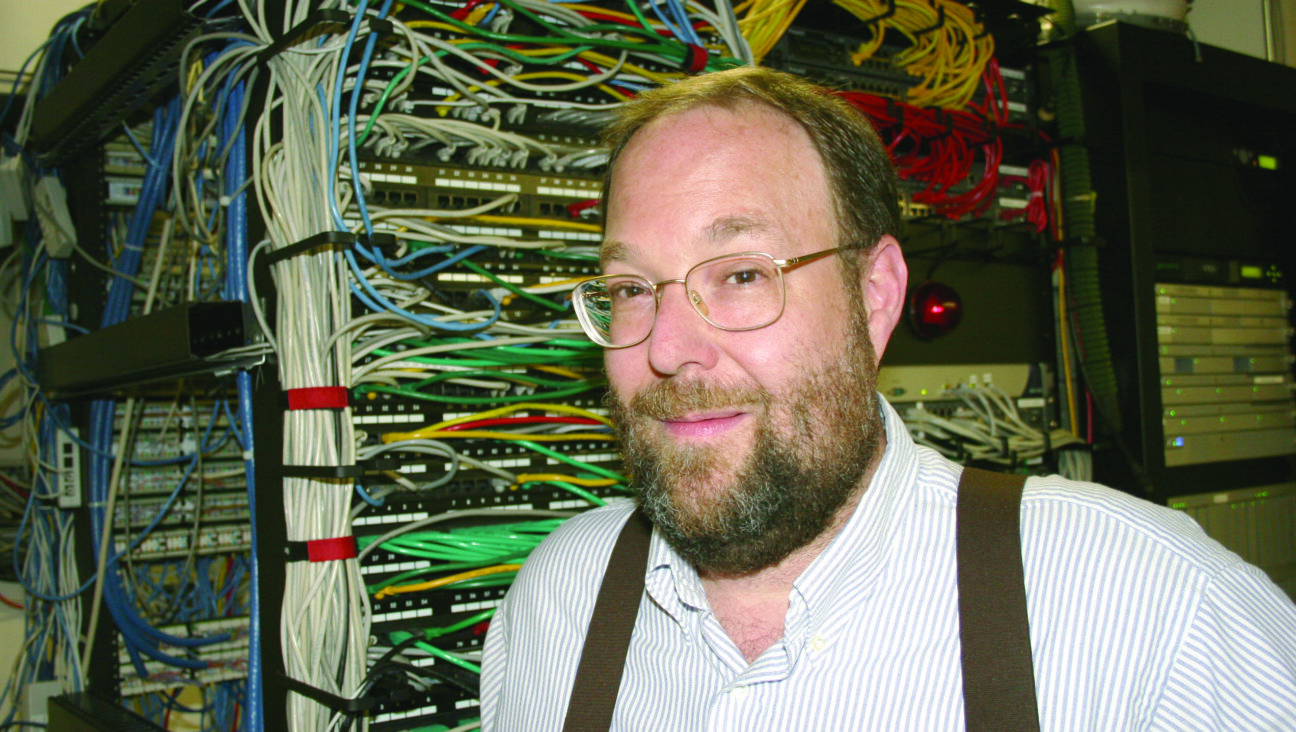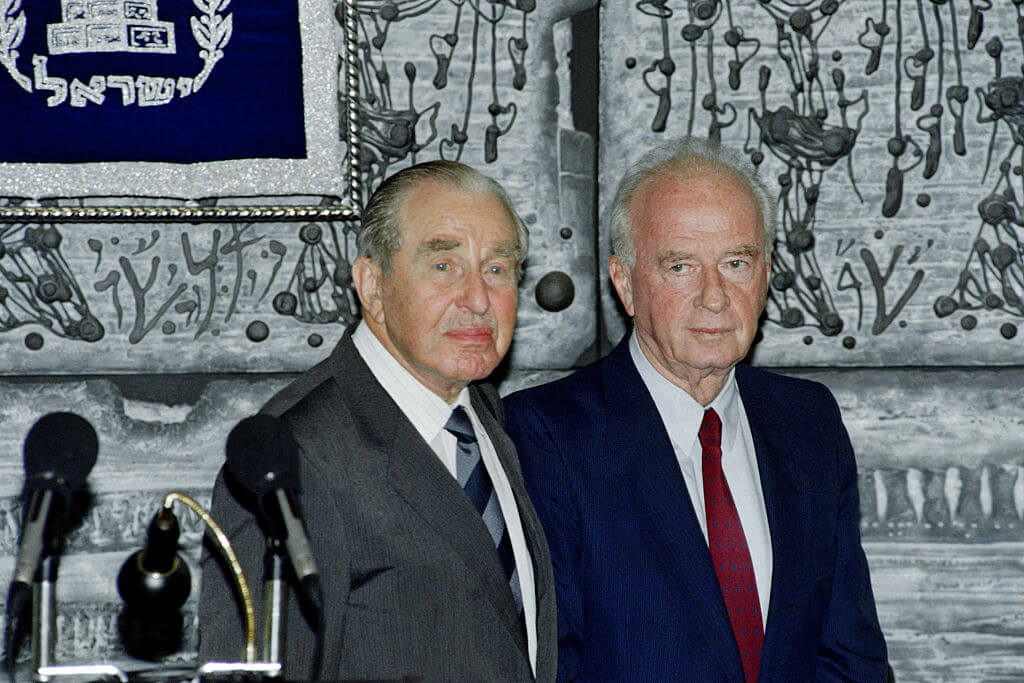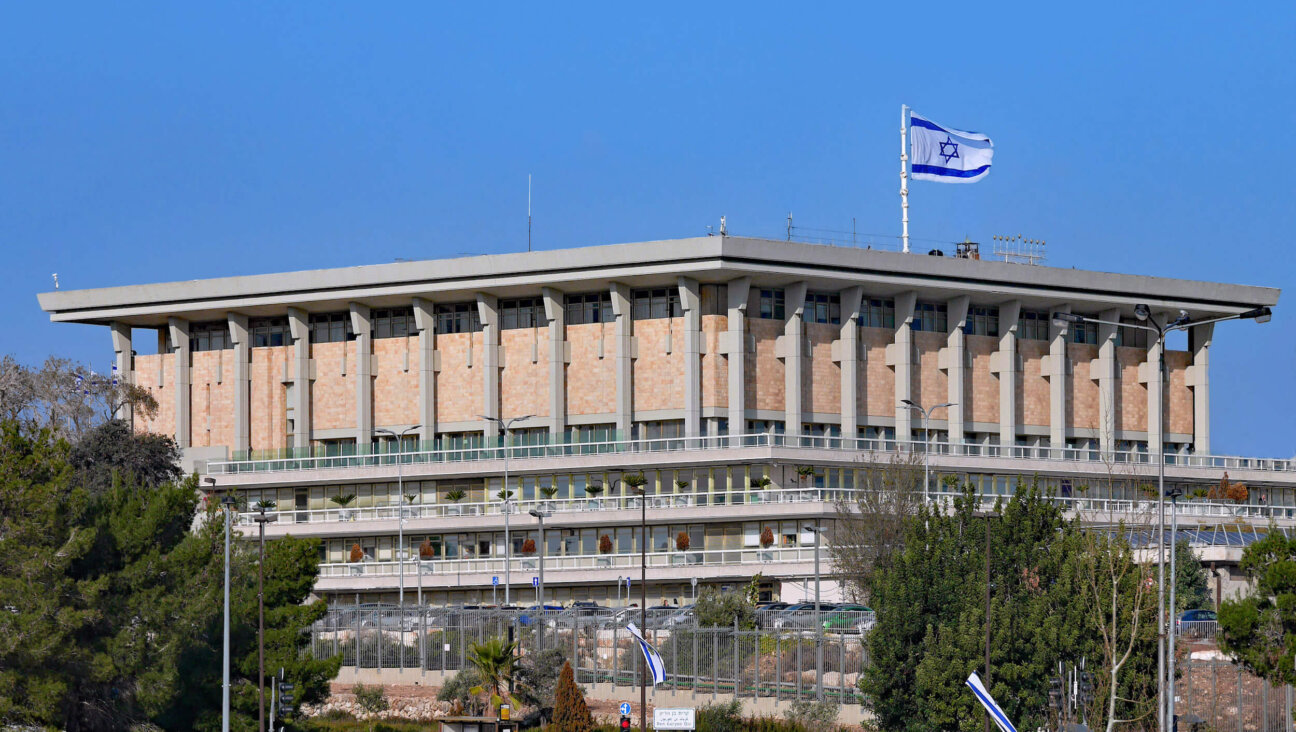Even a New Siddur Can’t Close ‘God Gap’

Graphic by Angelie Zaslavsky
What can a new Hebrew-English Siddur do to solve the problems of prayer for modern Jews?
It is no secret that the communal prayer experience of modern, socially integrated Jews in Western countries is deeply degraded. Rabbis and cantors work valiantly to engage congregants in worship with a sense of spiritual consciousness (kavanah) to little avail. National organizations and foundations create new projects and new programs to enhance the experience of synagogue prayer services, but attendance remains basically flatlined. Food service, Kiddush clubs and children’s programs bring larger numbers to the social elements of congregational experience, but with no palpable effect on the quality of participation in prayer.
From the time of World War II, there have been four attempts within the Modern Orthodox community to address the perceived deficiencies in personal and communal prayer. Now a new siddur is tackling the same challenge.
In the 1940s and ’50s the presumption seemed to be that the solution resided in comprehension of the text of the Siddur. Rabbi Joseph Hertz, then chief rabbi of England, composed a superlative English-language commentary to the Siddur, with side notes highlighting the essential ideas. Rabbi David DeSola Pool composed a new poetic and elegant translation of the Spanish and Portuguese liturgy, and of the Ashkenazic liturgy, the latter as an official Shabbat and Holiday Siddur for the Rabbinical Council of America (RCA). And Philip Birnbaum published a new Siddur with an accessible American English translation and short historical notes. A late entry in this class was the Metsudah interlinear Siddur by Rabbi Avraham Davis.
The second wave began with the ArtScroll Siddur of 1984. Its premise was that readers of a prayerbook needed intense, detailed directions as to “how to” engage in prayer, and exposure to traditional comments and inspiring thoughts. So, despite a pedestrian translation, ArtScroll made participation in the services easy, allowing the novice to participate as an aware member of the traditional community. The RCA edition, the most common Siddur in American Modern Orthodox synagogues, differs only in two ways: in its inclusion of the prayers for the State of Israel and the Israel Defense Forces, and in a short preface (written by me), which included, then for the first time in any ArtScroll publication, teachings of Rabbi Joseph B. Soloveitchik.
But none of this deeply affected the quality of prayer, which remained largely sterile. Intelligent, serious Modern Orthodox Jews brought reading material with them to synagogue, or sat with discussion partners to occupy their time meaningfully.
A third approach began in the mid-1990s, after the death of Rabbi Shlomo Carlebach, as his melodies for the Friday evening service began to sweep away the traditional Nusach and inspire popular participation in Kabbalat Shabbat. The social and emotional power of song added a spiritual involvement, making for a more profound experience. While this addition was clearly a positive one for individuals, rabbis and lay people are still arguing amongst themselves about whether the experience is one of prayer — is it communication with God?
The fourth and newest attempt takes the form of the Koren/Sacks Siddur, bearing the approbation of the Orthodox Union. The Hebrew text is that of the Koren Siddur of Israel, which includes not only the prayers for the State of Israel and the IDF, but also a full service for Yom HaAtzma’ut, as well as one for the celebration of the Unification of Jerusalem. The Zionist provenance is therefore clear and unequivocal.
The English translation, the excellent Introduction to Prayer and the Siddur and the explanatory notes are all drawn from the 2006 siddur by Sir Jonathan Sacks, the current Chief Rabbi of the United Hebrew Congregations of the British Commonwealth. This provenance shows clearly in the general Modern Orthodox ideology of the work — its maximum inclusion of women, its respect for all humankind, its non-fundamentalist orientation to Biblical texts, and its willingness to draw on non-Orthodox scholars and non-Jewish wisdom.
The Koren/Sacks Siddur is further enhanced by the arrangement of the Hebrew on the left page and the English on the right, so that shifting between languages is eased. The addition of “how to” instructions in the text and a lengthy appendix of laws and customs of prayer, make this text at least as user-friendly as the ArtScroll.
Meanwhile, a substantially new edition of the ArtScroll/RCA Siddur is imminent. This new edition is expected to incorporate many of those elements that make the Koren/Sacks Siddur distinctive, including a more overtly Zionist and Modern Orthodox ideological identity, as well as other unique elements. It is a serious indication of the maturity of the Modern Orthodox community that it can intelligently create and absorb multiple tools to enhance the community’s capacity to meet the challenges of prayer.
However, the central problem has still not been adequately addressed. Effective prayer is a vibrant conversation between an individual or a community, and God. But modern western civilization has, in four separate ways, distanced us from God. The success or failure of our work is no longer palpably dependent upon nature or God’s hand in it. The industrial revolution radically altered the perception of the factors that actually have an impact on our working lives: How can you talk meaningfully to God if you work in a factory or a bank, or in a store or an office?
Similarly, the revolution in technology has created the impression that solutions to all human problems, from medical to environmental to emotional, reside completely in human hands. Are you going to ask God about your latest lab results, or why your e-mail stopped working, or what you can do about the melting of the polar ice caps? Nor is there much room for the protracted process of the divine-human partnership in a world that expects instant technological fixes to all problems.
Thirdly, we feel distanced from God because of our communal comfort. Jews in western countries live today at a happily low risk of being killed, maimed or deprived of their wealth because they are Jews. Even in Israel, many more lives are lost to automobile accidents than to war or terrorism. The synagogue recitation of Birchat Hagomel, thanking God for rescue from grave danger, is most often recited today after an uneventful international flight, bearing virtually no feelings of fear, or of rescue from truly imminent risk. Tefillat Haderech, the prayer of travelers, is a thankfully routine recitation having no relationship to actual fear of wild animals or brigands on the roads.
Even the theology of modern western Jews echoes the position of medieval Jewish rationalist philosophers in denying that Divine Providence regulates every occurrence in the lives of all persons. The mystics argued that every stub of the toe and every falling leaf was a direct message from God, demanding human response to God. But the rationalists reserved such constant, detailed Providence for the select, the perfected person such as the prophet, leaving the rest of us subject to the chance consequences of natural events or of random human choices. So we, the masses confronting evil, need to deal with nature and with our fellow humans — only tangentially with God.
So, having alienated God from our work and our problems, from our risks and our accidents — is it any wonder that people sit for three hours in synagogue on Saturday mornings with nothing to talk about with God? Prayer feels like a forced conversation with a distant uncle, trying to elicit fragments of ancient family history, yet grateful for any possible interruption.
To make prayer meaningful for moderns, we need to get God out of the decreasingly significant “gaps” of risk and chance and irrationality. We need to get God and God’s values into the truly vibrant dimensions of our lives — into our productivity and our relationships, into our daily lives as individuals, as communities and as nations. Until then, new and creative Siddurim will have only a marginal affect on the prayer life of modern, socially integrated Jews.
Rabbi Berman is Associate Professor of Jewish Studies at Stern College, Adjunct Professor at Columbia University School of Law, and a 2009-2010 Fellow of the Tikvah Center of Law and Jewish Civilization at NYU Law School.














